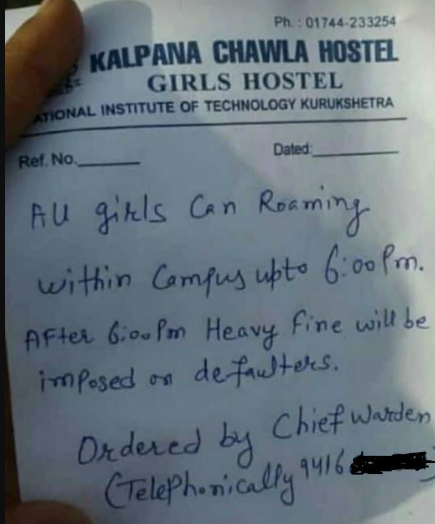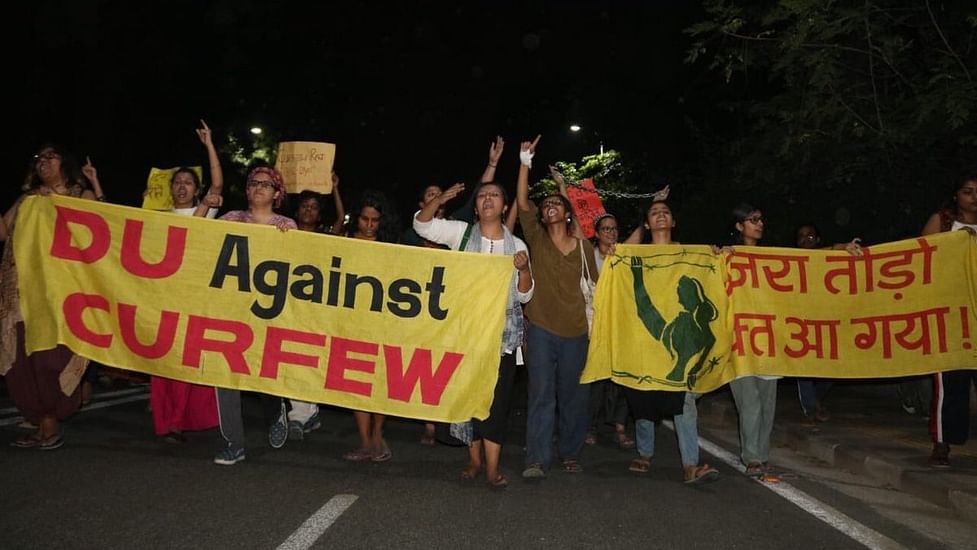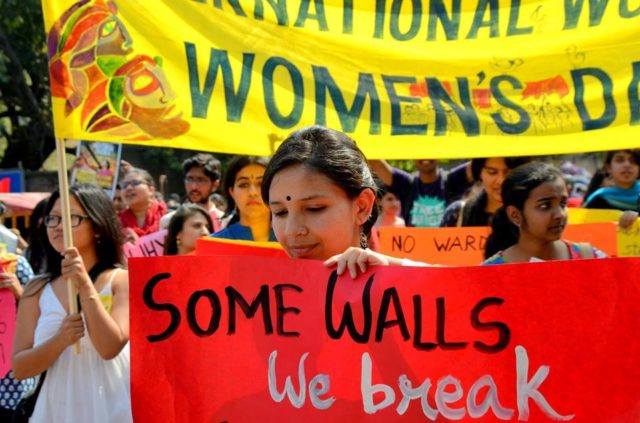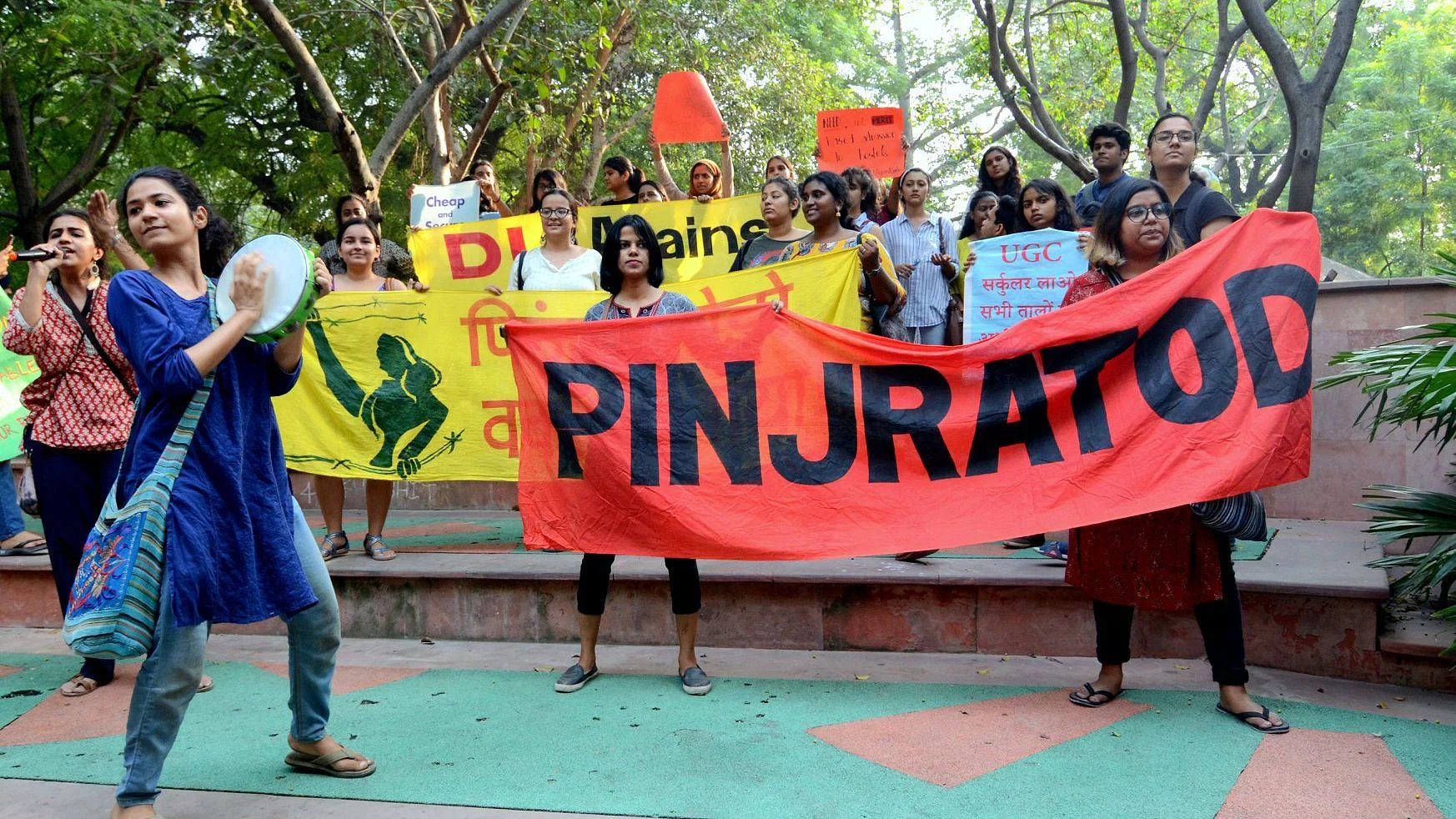Curfews, dress codes, and constant surveillance – the all too common themes that come up when interacting with female students who have lived in a girl’s hostel during their college years. In 2016, two female students were dismissed from VIT University, Vellore, one of India’s most well-known engineering colleges, for questioning the sexist rules enforced on girls on the campus.
A conversation with a former student at VIT elaborated on the rules specific to girls. There was a strict dress code specific to girls, and they were allowed to leave the campus only four times a month. A curfew of 8 pm at the hostel was enforced for female students, with male students facing no such restriction.
Those who wished to work in a lab or participate in student clubs in the evening had to get special permissions every week, with an elaborate dance of bureaucracy. Male students needed none of these permissions and were free to explore the campus to their heart’s content. One particular student who interacted with me also participated in university debates that required travel across the country. However, they were only allowed to go if a female faculty member was present. Male students faced no such caveats and could officially represent the university in such activities at any time.

At another engineering university in Chennai, while the rules on paper apply to both male and female hostel students, enforcement is much stricter for women. The curfew timings for female hostels are religiously monitored while the male students, especially those in the later years at the university are given free rein.
These restrictions are less of a concern regarding the well-being of students and more about the backlash university and hostel authorities might face, in case of any ‘untoward incident‘. There are several flaws in this argument. One, it places the onus of safety on girls, by restricting their movements. Two, it operates on the assumption that danger only exists during certain hours of the night, and in certain settings. Lastly, it ignores the need to address these risks by stepping up security measures such as better streetlights and training students about concepts like consent and mutual respect
My own experience with a hostel that imposed a strict curfew for the female hostelers testifies how women were to produce signed permission by either a parent or local guardian every time they wished to stay out beyond the curfew, with limited allowances each week. Similar stories are always common when conversations about hostel woes come up among female students in Mumbai.
My university during my undergraduate degree only had a boy’s hostel, as it was touted as a security risk to have a girl’s hostel as well in the vicinity. My disbelief stemmed from the fact it was considered less of a security risk to have young girls being forced to seek accommodation options in an unknown city, rather than provide some level of comfort and accessibility within the campus that male students were afforded.
Housing a female student is often looked at as a liability rather than simply a means to provide relatively affordable housing for students in large cities or to have greater accessibility to a university campus. It is rare for male students to face the same level of scrutiny and concern when it comes to housing.
Also read: ‘Mission Trousers’ Against The Body & Dress Policing In Our Hostel Mess

These restrictions are less of a concern regarding the well-being of students and more about the backlash university and hostel authorities might face, in case of any ‘untoward incident‘. There are several flaws in this argument. One, it places the onus of safety on girls, by restricting their movements. Two, it operates on the assumption that danger only exists during certain hours of the night, and in certain settings. Lastly, it ignores the need to address these risks by stepping up security measures such as better streetlights and training students about concepts like consent and mutual respect.
These rules and restrictions, harsher on girls, are not just the outcome of discriminatory policies of university or hostel authorities. They also strive to fulfill a socio-moral demand to control and police women’s activities. Families feel appeased and secure when presented with such rules, where it becomes more acceptable to send their daughters to live away from home in a place where they are monitored every minute.
If discipline is touted as the reason, curfews, dress codes, and accessibility to certain facilities should apply to all, regardless of gender. All such restrictions do is breed more fear and resentment, as well as perpetuate the dangerous reasoning that in cases of gender-based violence, the victim is to blame
For example, the 2019 protests against Punjab University’s hostel restrictions saw mixed reactions. While many supported the fight against unequal structures and rules, many also saw the different treatment of female students as necessary. The Tribune had listed some opinions about Punjab University’s decision on expelling female students who did not sign a mobility register.
“It must also be realised by female hostellers that the university authorities are answerable to their parents and guardians for any untoward incident. Certainly, girl students must fight for gender equality in the field of studies, debates, sport, and other academic curriculum or activities and must withdraw their demand to scrap the attendance-cum-mobility register, a requirement totally in the interest of girl hostellers.”
Such viewpoints argue that the apparent threat to girls in the presence of men is more important than their freedom and that authorities advocate for such rules in their interest. They also suggest that society is not overly concerned with the safety of young men, which can be interpreted as callousness towards their lives or a general assumption that it is more often men, not women who are perpetrators of such violence and thus are not vulnerable to it.

All in all, this is a continued reflection of sexist norms that exist in society, where women are prevented or shamed for going out of the home for any purpose other than work, especially after sunset. All such controlling activities are implemented in the name of safety and their well-being. Women are rarely able to just be in a public space without becoming anxious about social, moral, and familial scrutiny.
Restrictions such as these infantilise young women, who are treated as incapable of making choices of their own. While it is an unfortunate truth that women are more vulnerable to harassment and violence, locking away the prospective victim is never a solution. Instead, more efforts should be focused on educating and changing social norms.
If discipline is touted as the reason, curfews, dress codes, and accessibility to certain facilities should apply to all, regardless of gender. All such restrictions do is breed more fear and resentment, as well as perpetuate the dangerous reasoning that in cases of gender-based violence, the victim is to blame.
Also read: “Nights Want Lights, Not Locks”: Patiala Students Campaign Against Hostel Curfews
Featured Image Source: The Quint




